Originally posted 2013-10-23 08:10:08.
Millions of Muslims converge yearly to Saudi Arabia to perform the annual Hajj, one of the world’s biggest displays of mass religious peaceful devotion. Hundreds of thousands of pilgrims have started to leave the Kingdom after peacefully performing the journey rituals.
The number of pilgrims this year has been put at almost 1.5 million, according to Saudi authorities. Hajj officially began on Sunday, 13 October when pilgrims from all over the world began travelling from the holy city of Makkah to Mina, which is roughly 8 kilometres away.
On the second day, Monday, 14 October, pilgrims were staying in `Arafat until sunset before heading to Muzdalifah, where they spent the night before moving on in the morning to start the ritual of symbolically stoning the devil by hurling pebbles at the three walls of Jamarat.
Hajj, which officially ended on Friday, 18 October, must be performed by every Muslim with the physical and financial means to do so, at least once in their lifetime. Among the rites Muslims must perform during the soul-searching journey are circumambulating the Ka`bah, praying at nearby Mount `Arafat (the most essential ritual in the hajj journey) and stoning the devil.
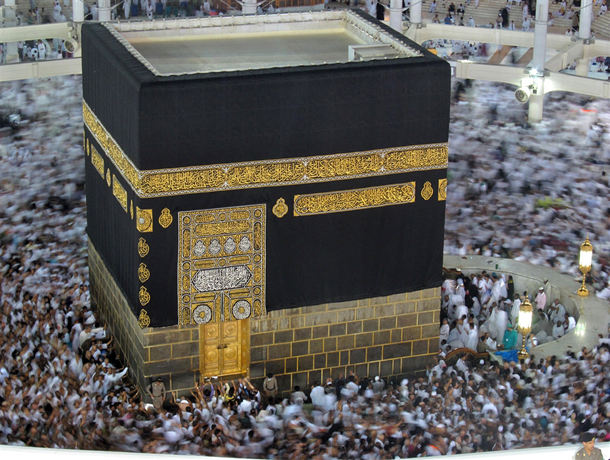
Muslim pilgrims circle the Kaaba as they pray inside the Grand Mosque during the hajj, in Mecca, Saudi Arabia, Oct. 15, 2013. The hajj, a central pillar of Islam and one that able-bodied Muslims must make once in their lives, is a four-day spiritual cleansing based on centuries of interpretation of the traditions of Prophet Muhammad.
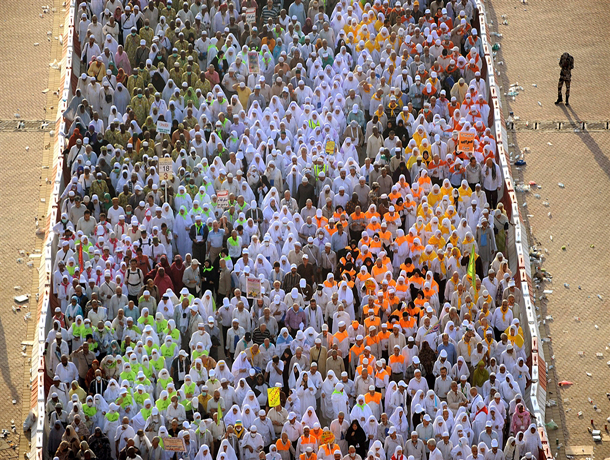
Muslim pilgrims head to the “Jamarat” ritual, the symbolic stoning of Satan, where they throw pebbles at pillars, in Mina near the holy city of Mecca, on Oct. 16, 2013. Pilgrims pelt pillars symbolising the devil with pebbles to show their defiance on the third day of the hajj as Muslims worldwide mark `Eid Al-Adha or the Feast of the Sacrifice, commemorating Abraham’s willingness to sacrifice his son Isma`il on God’s command.
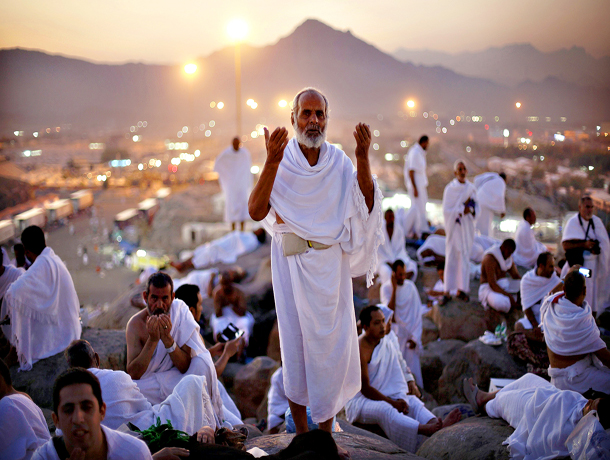
A Muslim pilgrim prays atop Mount Mercy on the plains of `Arafat during the peak of the annual Haj pilgrimage, near the holy city of Makkah early on Monday morning. An estimated 2m Muslims were in Mecca, Saudi Arabia, for the start of the annual Haj pilgrimage.
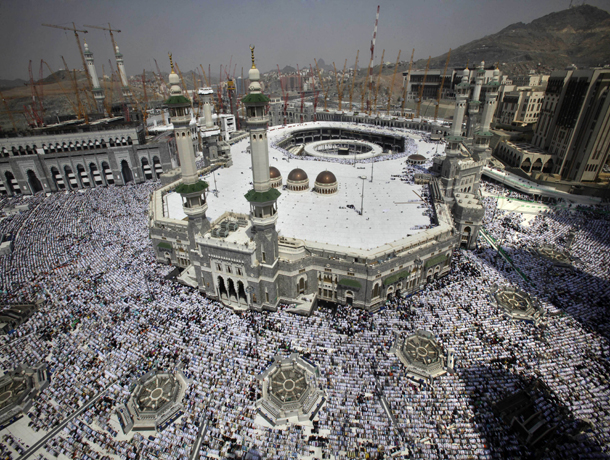
The Friday before the Hajj, Muslim pilgrims attended Friday Prayers at the Grand Mosque in the Muslim holy city of Makkah. (AP)
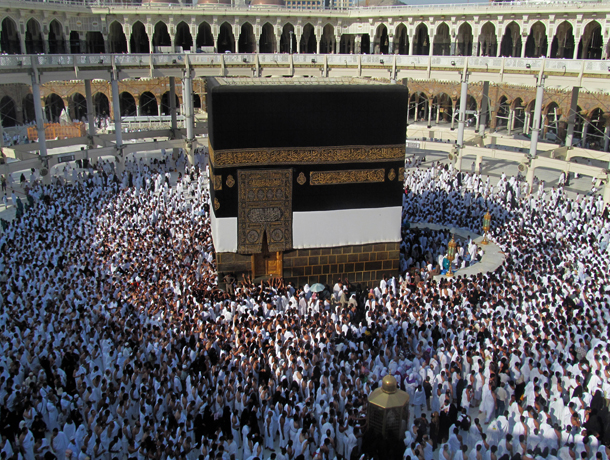
On the first day of Hajj, Muslim pilgrims circle counterclockwise with their hearts tilted toward the Ka’bah (the cube-shaped structure that Muslims around the world face in prayer five times a day) in the Grand Mosque. (AP)
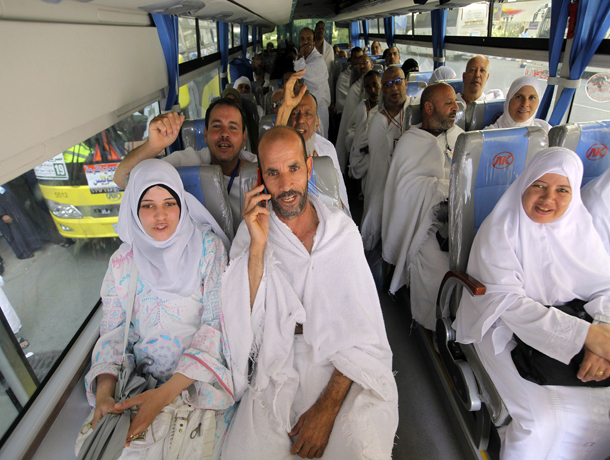
Male pilgrims are required to wear Ihram (two white cloths) while female pilgrims usually dress simply and leave only their faces and hands uncovered. The customary dress is a symbol of purity and unity, as socio-economic distinctions are no longer apparent. (AP)
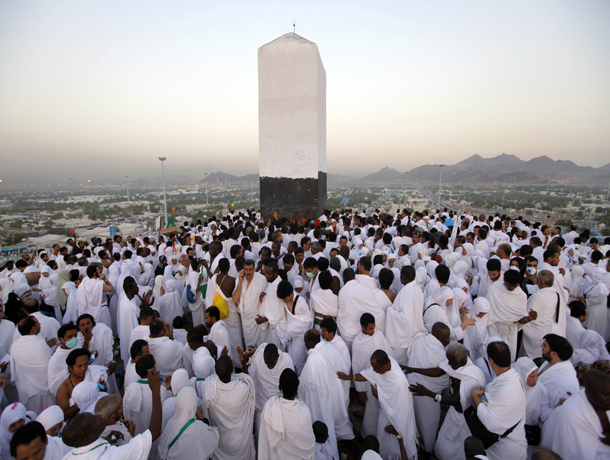
On the second day of Hajj, Muslim pilgrims pray on a rocky hill called `Arafat or the Mountain of Mercy, 12 miles from the holy city of Makkah. It is here that the Prophet Muhammad was believed to have given his last sermon. (AP)
 Arabic
Arabic English
English Spanish
Spanish Russian
Russian Romanian
Romanian Hindi
Hindi Tagalog
Tagalog Bengali
Bengali Sinhalese
Sinhalese Nepali
Nepali




